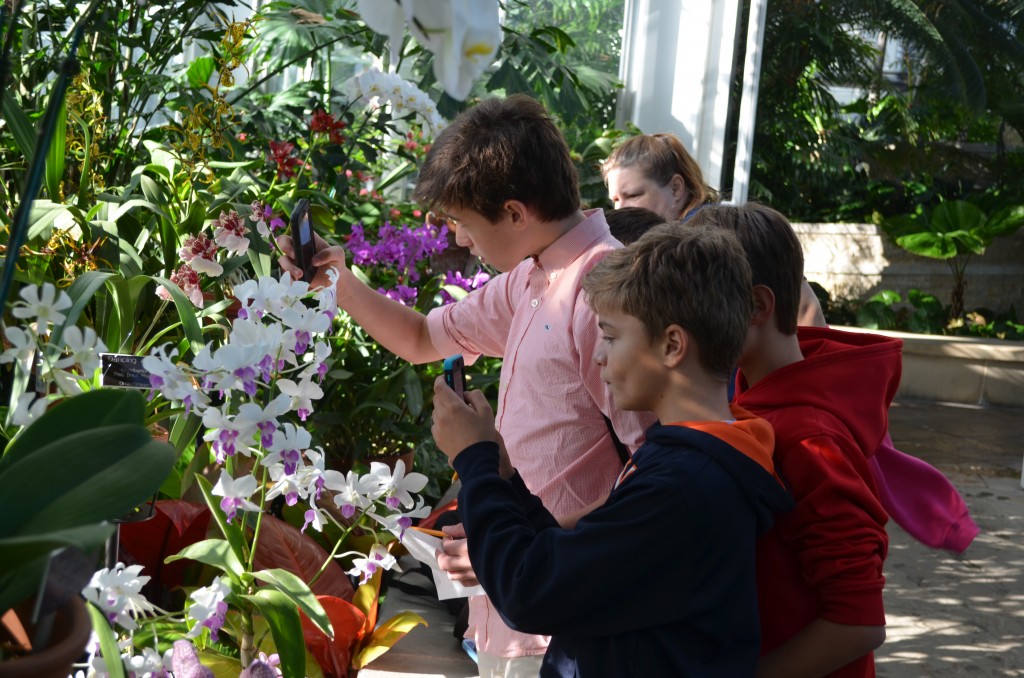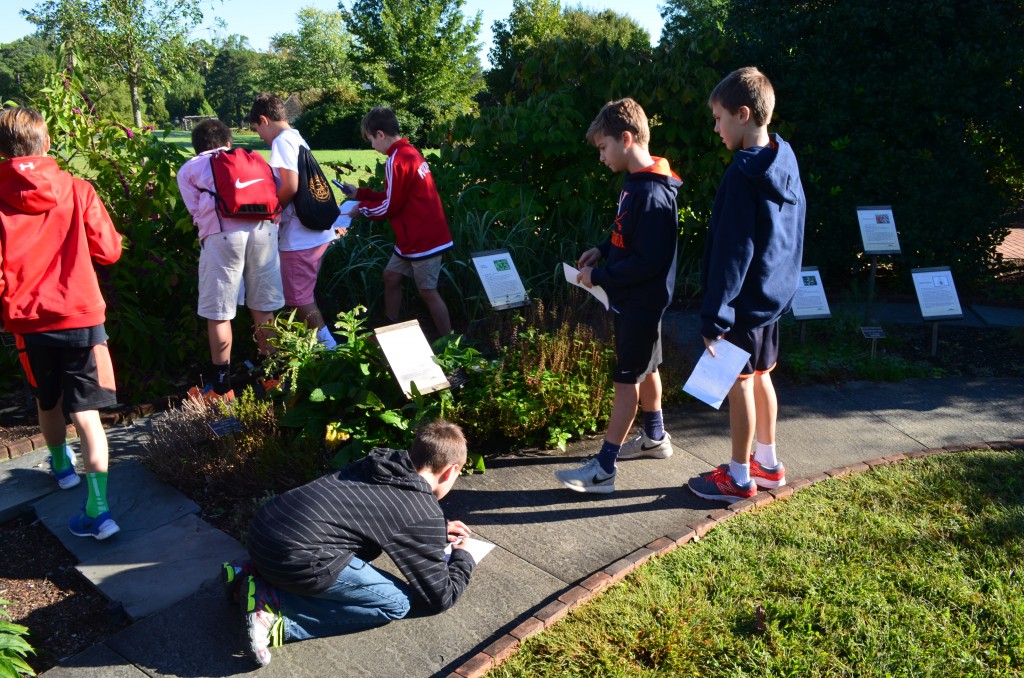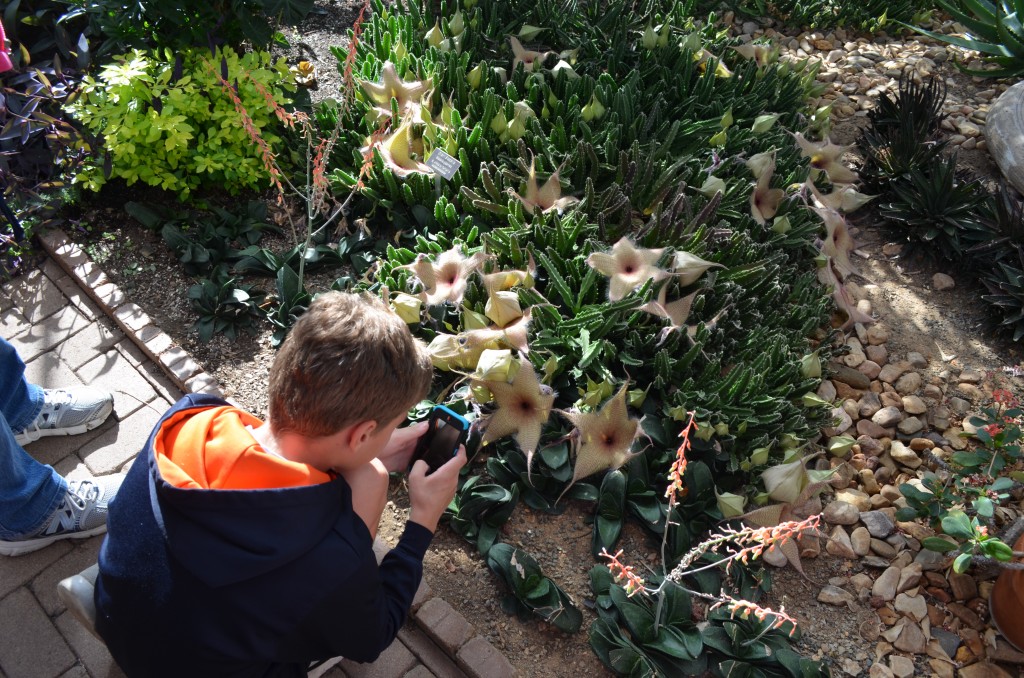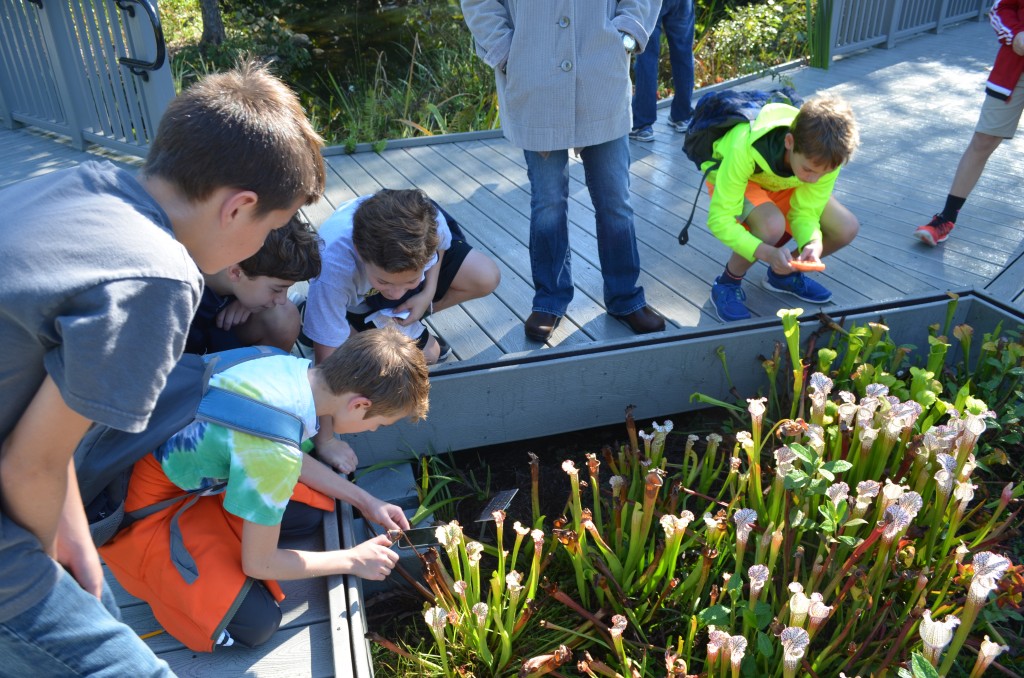Tweens in the Garden
You can imagine how thrilled I was when my son’s middle school English teacher told me they were coming to Lewis Ginter Botanical Garden for a field trip that would combine reading and science. I decided to tag along for the morning to see how “tweens” experience our Garden. The students’ summer reading project was “Surviving the Applewhites,” a book about an eccentric homeschool family who adopted a juvenile delinquent. It’s a book about growth and change, and in the story a butterfly science project plays a part in the transformation of the characters. Fitting, since these 6th graders are studying the life cycle in science and even have chrysalids in their classrooms. Plus their own lives are undergoing a transition from elementary to middle school, as they transition from childhood to the teenage world.
The 11- and 12-year-olds from Henrico County School’s Tuckahoe Middle School International Baccalaureate program came to the Garden for free exploration time. This means that they toured Butterflies LIVE! and the Garden independently (with chaperons).
In order to get them started and make sure that they explored a wide section of the Garden, we supplied them with an ABC scavenger hunt. The goal was to find a plant for each letter of the alphabet whose common or botanical name started with each letter. This was great because it got them to engage with the plants by looking at the botanical names. Plus this open-ended exploration allowed them to exhibit and practice some of the IB Learner Profiles (Inquirers, Knowledgeable, Thinkers, Communicators, Principled, Open-minded, Caring, Risk-takers, Balanced, Reflective) that are integral to their program.
I was surprised to see that my son was assigned to a group of 11 boys and two teachers. Not intimidating at all! I guess I thought I’d be the really cool mom when I showed the boys the Stapelia gigantea plant in the West Wing of the Conservatory. If you don’t know about staphelia, I should tell you it’s common name is carrion plant — and for good reason! It smells like, you guessed it, rotting flesh. And it looks like skin or flesh — please stop me if I’m being too graphic here — in the center of the bloom you can see what looks to me like a scab. Gross! The truth is, these boys were really, really sweet and while they may have thought it was neat to learn how flies are attracted to this plant as pollinators, because well flies *love* rotting flesh, I may have freaked them out a bit.
There were several really fun opportunities for me to share my geeky botanical knowledge with them: Having them guess the name of the turtlehead (Chelone lyonii) plant (apparently they don’t think it looks like a turtle’s head.) Showing them how a new “leaf” or platter forms on Victoria cruziana (Victorian water lily), explaining how the buds only bloom for two nights, first opening as a red or pink bloom and then later fading to white, and that the leaves can grow to be 6-feet across in the Amazon. Talking to them about why we have some “wild” areas here, like the Anderson Meadow. (Replacing turf with wildflowers and native grasses helps the environment in multiple ways, less mowing, less fertilizer, less run off, more areas for wildlife.)
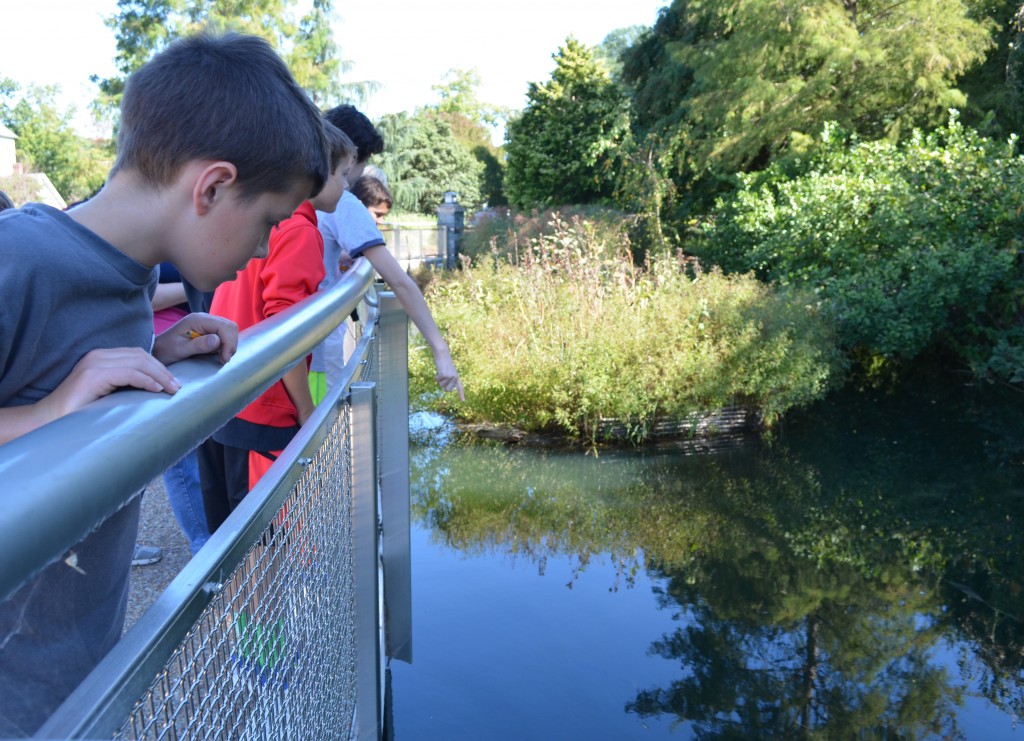
The boys were really interested and curious about that the turtles congregating near the floating wetland island. They asked me what kind of turtles they were, but I didn’t know. I told them to study them closely and see if they could recognize the turtle head flower now.
Later we circled back to this idea again when I showed them our floating wetland, affectionately known as the Floating Island Garden, and made out of recycled water bottles and built with the help of the Chesapeake Bay Foundation as part of a test project to help clean the Upham Brook watershed. The plants on the Floating Island absorb the excess nutrients in the water, which helps clean the water and deter algae blooms.
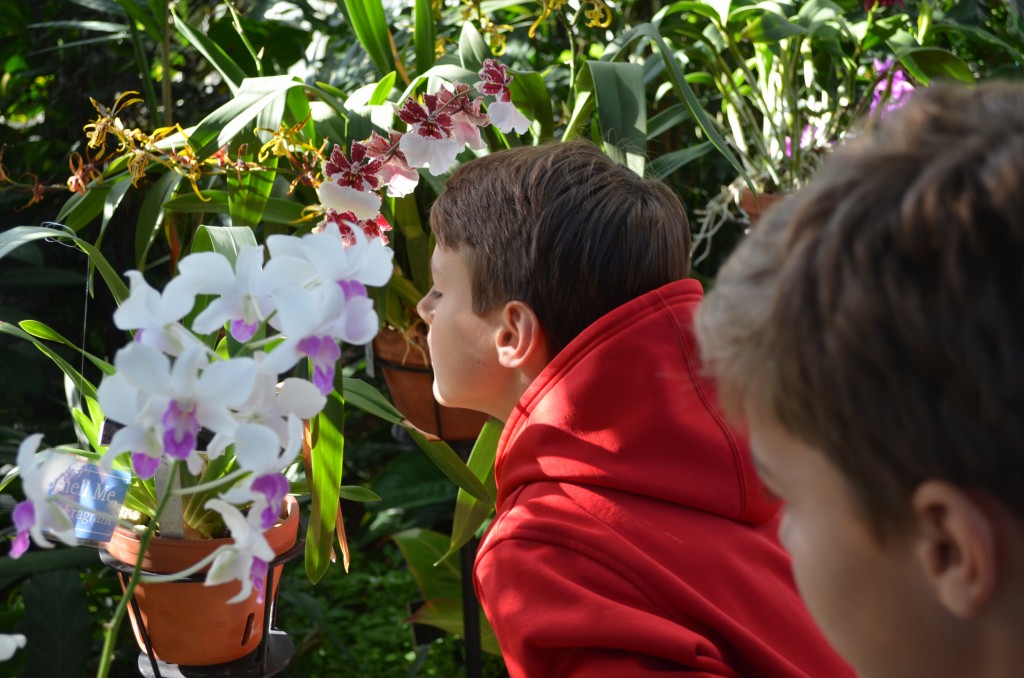
Yes, even middle school boys like to smell orchids and roses. (But not carrion flowers, and only Osmanthus if enticed).
As we walked through the Grace Arents Garden and back towards the Children’s Garden I remembered another bloom I wanted to show the kids. “This bloom has a tiny little blossom.” I said, “but you aren’t going to believe the smell.” The boys started walking in the other direction and covering their noses, remembering the last bloom I asked them to smell. I really had to convince them that this was a good smell, not like the staphelia. The ones who were willing to be risk-takers got to enjoy the heavenly smell of sweet olive (Osmanthus x fortunei ‘Fruitlandii’) in the crisp fall air.
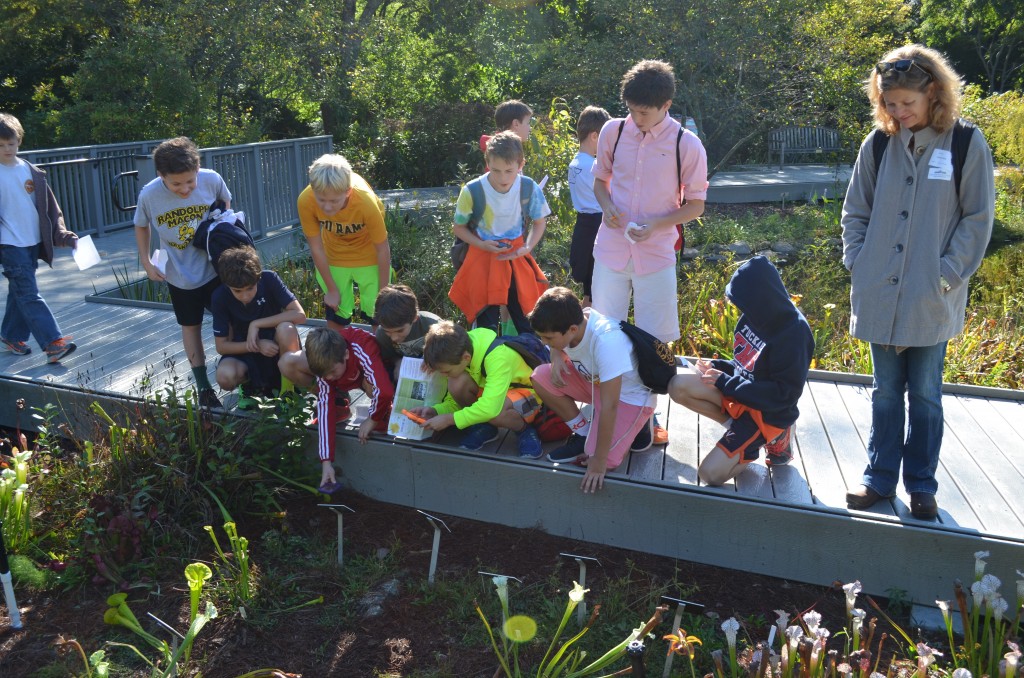
The West Island Garden is home to our carnivorous plants. Here the boys are looking at both Venus flytrap and pitcher plants.
Although the IB classes were here for free exploration, not a planned activity with an educator, the Garden does have several options for middle school programs with hands-on learning with educators that tie into the Virginia SOLs. I know the kids learned alot while they were here, and I’m fairly certain that this field trip will not be forgotten anytime soon. The boys in my group loved learning about and seeing our carnivorous plant collection and learning the reason why these plants evolved to eat insects. They asked lots of great questions, many of which I’m sure will be answered by their science teachers later in class — we sent the school groups home more educational fun — pitcher plants or Sarracenia for dissection.
Personally, I’m really curious to know what the kids thought of this field trip. I’m hoping that some of them will write a reflection, and share some of their photos. If they do, you can be sure that I’ll share them on this blog. I’m happy to say that I did see many the tweens practice and exemplify many of the of the IB Learner Profiles. But ultimately I learned that what’s most important is that kids sometimes just need to climb a tree. It helps if it’s a 100-year-old mulberry, and I think a few of them will come back at the end of May when it fruits. Their eyes lit up when I told them about climbing the tree, competing with the birds for all the berries they wanted, and coming down with red-stained hands and faces.
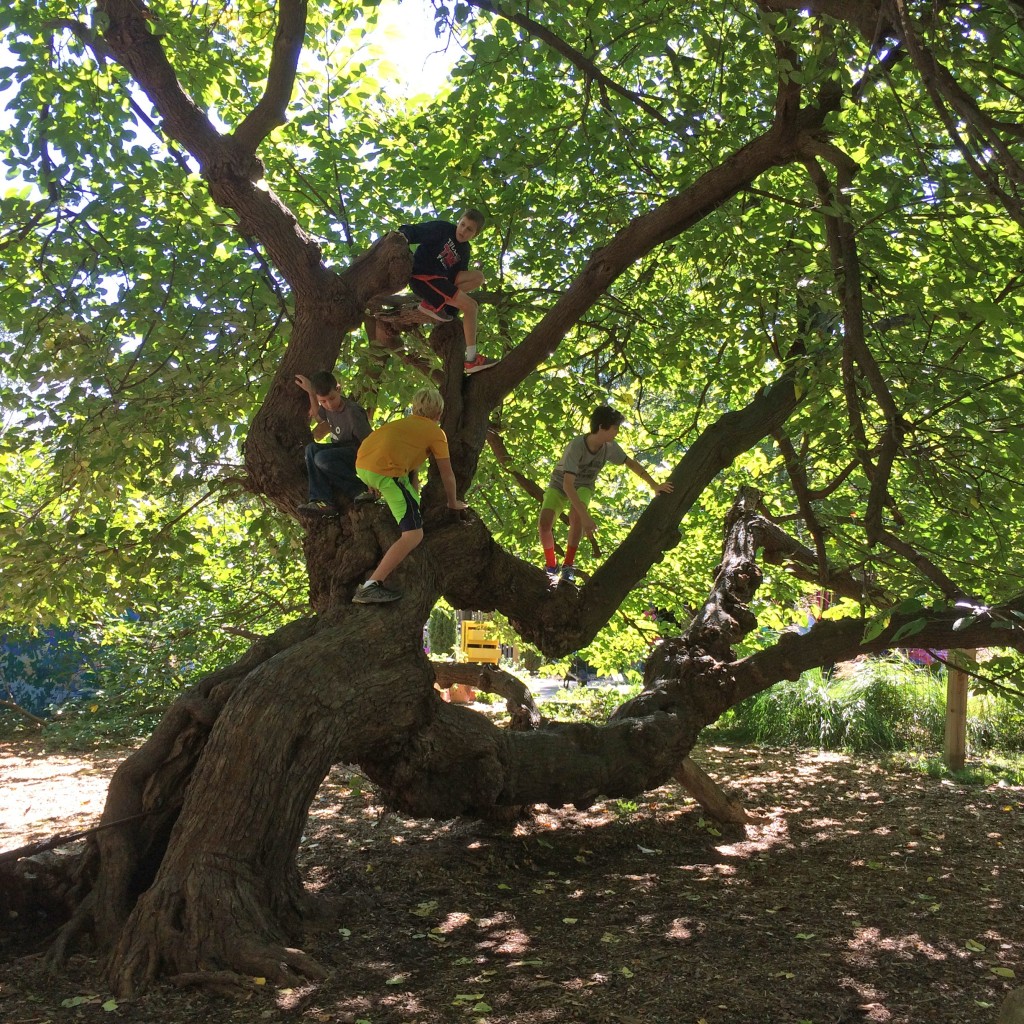
There’s just something about boys in trees. You’re never too old to climb a tree! And as you can see, these boys have already mastered the Risk-taker learner profile.
